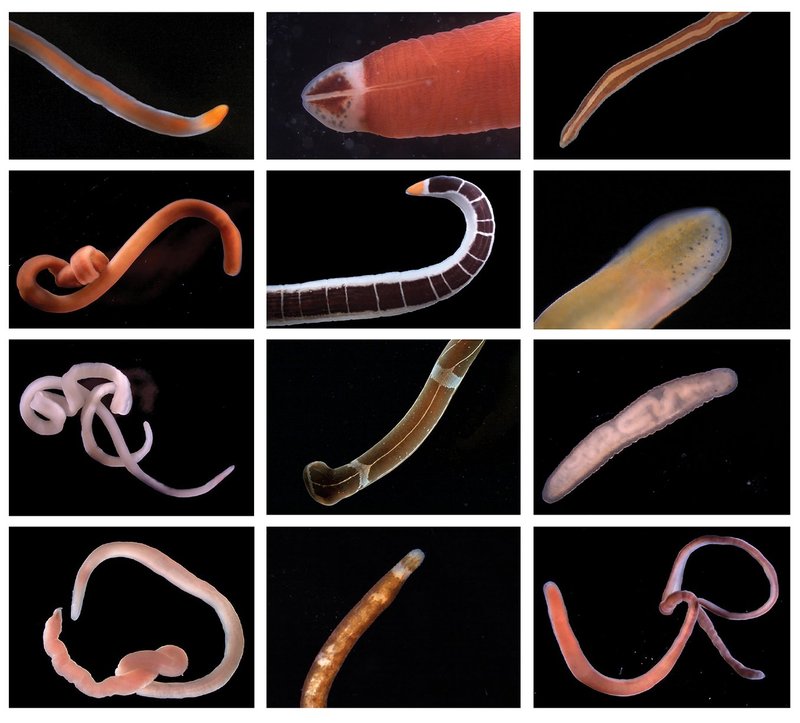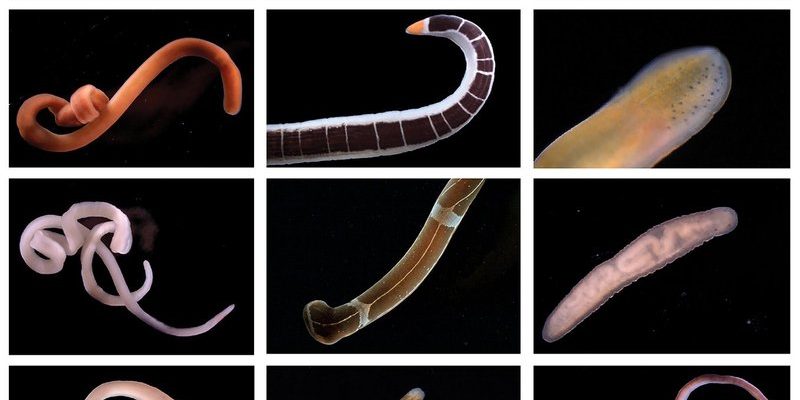
Understanding the **color variations in ribbon worms across species** can feel like peeling back the layers of a candy wrapper. Each color and pattern tells a story about the worm’s environment, behavior, and evolution. So, grab your cup of coffee, and let’s dive into the colorful, wiggly world of these remarkable creatures!
What Are Ribbon Worms?
Ribbon worms, scientifically known as *Nemertea*, are elongated, soft-bodied animals that primarily live in marine habitats. You might think of them as the gymnasts of the ocean floor, as they can stretch and contract their bodies with impressive flexibility. Most species live buried in the sand or hiding under rocks, which adds a mysterious element to their existence.
These worms can range from just a few millimeters to several meters long, depending on the species. Some of the most vibrant colors come from the larger species, which often have striking patterns that can distract from their wiggly movements. Imagine a painter using a brush to create stripes and swirls on a canvas—this is what ribbon worms do in the ocean!
But what makes their colors interesting? It’s all about survival and reproduction. The colors can signal to potential mates or warn predators. This is nature’s way of using color as a sort of language, and ribbon worms are fluent in it.
Why Do Ribbon Worms Have Different Colors?
You might be wondering: why do some ribbon worms sport bright reds and yellows while others are more muted in color? The answer lies in their *adaptation*. Different species have evolved to blend in with their environments, using color as a camouflage. For example, worm species that dwell in coral reefs might be more colorful to match their vibrant surroundings.
Additionally, color can play a role in signaling. Bright colors might attract mates, while duller hues might help avoid detection by predators. This is similar to how some animals use bright plumage to attract attention or dark fur to hide. Each ribbon worm is like a little living canvas, painting its life story with the colors of its environment.
Here’s a neat way to think about it: imagine wearing different outfits for various occasions. Just like you might wear bright clothes to a party and darker ones for a job interview, ribbon worms change their colors based on what’s happening in their lives.
Common Color Variations in Ribbon Worm Species
When it comes to ribbon worms, some species are known for their stunning color patterns. Here’s a brief look at a few remarkable examples:
- Prostoma graefferi: This species is often bright orange or red, which can be quite eye-catching. It’s thought that their vivid coloration might help them attract mates.
- Baseodiscus bicoi: A wonder of nature, this worm boasts a dark green body with lighter stripes. The unique coloration helps it blend perfectly with underwater vegetation.
- Cephalothrix linearis: This species features a strikingly patterned body that ranges from pale yellow to vivid blue. Its colors can change slightly with its environment, highlighting its adaptability.
Each of these species showcases how color plays an important role in survival and reproduction. Let’s dive a bit deeper into how these colors are produced.
The Science Behind Coloration
So, how do ribbon worms get their colors? It’s all thanks to pigments in their skin tissues. Much like a painter mixes colors to create a masterpiece, ribbon worms have specific pigments—like carotenoids and melanins—that give them their vibrant hues.
Carotenoids, for instance, are pigments found in many living organisms, including plants. Some ribbon worms can’t produce these pigments themselves; instead, they absorb them through their diet. That’s right! The food they eat can directly influence their color.
The presence or absence of specific pigments can also change depending on environmental conditions. In areas with more sunlight, some worms might develop brighter colors to attract mates, while those in darker environments might become more subdued. It’s all about adapting to their surroundings!
Behavioral Implications of Color Variations
Color doesn’t just play a role in a ribbon worm’s appearance; it can also impact their behavior. For instance, a brightly colored ribbon worm might be more assertive in mating rituals, while a more muted worm might adopt a cautious approach to avoid predators.
Here’s an interesting thought: have you ever noticed how certain animals act differently based on their coloring? It’s similar with ribbon worms. Their colors can indicate their readiness to mate or signal their health status to potential mates.
Additionally, researchers have found that some species of ribbon worms can change their colors when they feel threatened. This ability to alter color serves as an effective means of camouflage, helping them evade predators. They might not have a superhero cape, but they surely have color-changing powers!
Environmental Impact on Color Variations
Just like how a sunny day can brighten your mood, the environment plays a significant role in shaping the colors of ribbon worms. Factors such as water temperature, light levels, and the availability of food can drastically influence their coloration.
For example, in warmer waters, you might see more vibrant ribbon worms due to increased food availability and sunlight. In contrast, colder environments might lead to more muted colors as the worms adapt to their surroundings.
This environmental aspect is crucial for understanding the bigger picture of marine life. It highlights how interconnected everything is in nature. Just as certain flowers bloom in specific climates, ribbon worms showcase their colors based on the conditions they thrive in.
In closing, the **color variations in ribbon worms across species** are more than just eye candy. They represent a rich tapestry of adaptation, survival, and communication in the underwater world. Each color and pattern tells a story, helping these remarkable creatures thrive in their specific environments.
Next time you imagine the ocean, think of the vibrant ribbon worms, twisting and turning in a dance of color. They remind us how diverse life can be and how much we still have to learn about the wonders of nature. Just like a brightly wrapped gift, there’s always a surprise waiting when you dive into the world of ribbon worms!

